Extinction - Panthera Leo Spelaea, a missing subspecies, and we might just lose them all.
We all love the lion, the king of the forest we call them, the pride of the animal kingdom. Watching the Lion King Simbad with my kid bro way back, I took to notice the excitement they can bring to children and elders (that's on movies though) but when a visit to the zoo is called, a roar which can be heard from 5 miles away brings this great terror, felt it a bit tough :) .
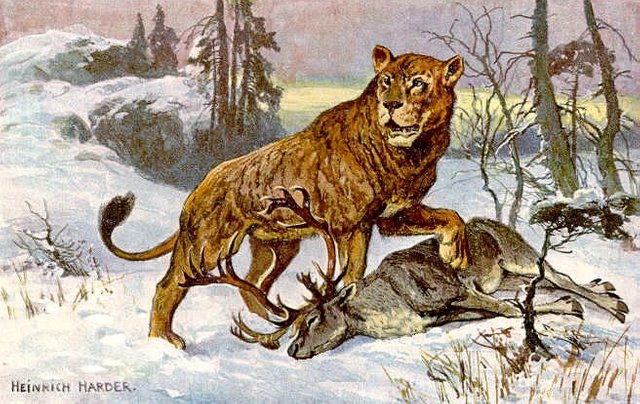
Wikimedia: Panthera leo spelaea and it's preyby Heinrich Harder now in public domain under CC BY-SA 3.0
But the well known Panthera leo which we sometimes get scared at its sight is actually the smallest of its specie as sizes arranged the Panthera atrox to be the biggest followed by the Panthera fossilis, the Panthera leo spelaea(all extinct lions) before the Panthera leo. Now compare what you saw in the zoo with another 10% bigger, I bet you might pee your pants at the sound of its roar.
Allow me to sound like our distilled, Welcome to the first issue on Extinction :)
Today we will dig up some bones and teeth (don't get all scary on me) , burried hairs, analyze frozen skeletons and take a walk into caves with our fire Lanterns as we try to get a picture of the extinct Panthera leo spelaea, and how Surviving earth was like.
We will also try to know the the cause of extinction and further relate it to its living specie which is currently of a declining status, what will become of the Lions? Will we one day lose them all?. Let's begin with some digging.
This article was brought to you in conjunction with our partner Mechanic Assistant and celeb examiner
A Discription Unseen
With respect to description, many had so much to say with regards this animal, some even tried classifying them under another specie of the Panthera based on the analysis of its skull but it's molecular data confirmed it in them in same genus as the modern lion. Some also say its a subspecies to the Tiger (the Panthera Tigris spelaea) but from research into the genetics of this mammal, findings say it's related to the modern lion.
If you had met the Panthera leo spelaea, you would have met a large member of the Panthera genus, with regards some remains found around Siegsdorf, Germany in 1985, an adult male was noticed to have its shoulder height to be about 1.2 meters in length with a body length of about 2.1 meters (tail not included).
Though findings have shown other larger extinct members of the Panthera genus such as the Panthera atrox and the Panthera fossilis, (of the largest sized lion to be 3.5 meters body length and 400kg weight) a sized panther leo spelaea is estimated to be 5% to 33% large than the Lions we met in our time and probably larger than the Siberian tiger, it's female adult was smaller in size.
Trying to ascertain the colour of the cave lion, a study was made on the hair of the Panthera leo spelaea which was found frozen and when compared with a modern African Lion it was believed that this lion was of a similar colour but slightly lighter in colour. Also findings show a thick, dense undercoat which comprise of yellowish white wave downy hair and also a small amount of guard hair, dark coloured, which suggested an adaptation for the climate of the Ice age hence its difference with the modern lion.
Wikimedia: The SkullbyGhedoghedoLicenced under CC BY-SA 3.0
Paintings from caves, carvings and figures mad from clay told us that the cave lions ears were round and it protrude outwards, it's tail tufted and it was known to have stripes which looked more like that of a tiger and some having a mane around the neck which suggested a male.
A popular cave drawing of this animal is in France, the Chauvet cave, showing two Panthera leo spelaea walking, this drawing is estimated to have been drawn about 30,000 years ago.
What Surviving On Earth Was Like
The Panthera leo spelaea was ascertained to stay mostly In the forest, though they were called the cave lion due to the fact that most of their remains were found in caves but these remains were found with remains of the cave hyena and the cave bear, and artefacts suggested that they might be solitary hunters.
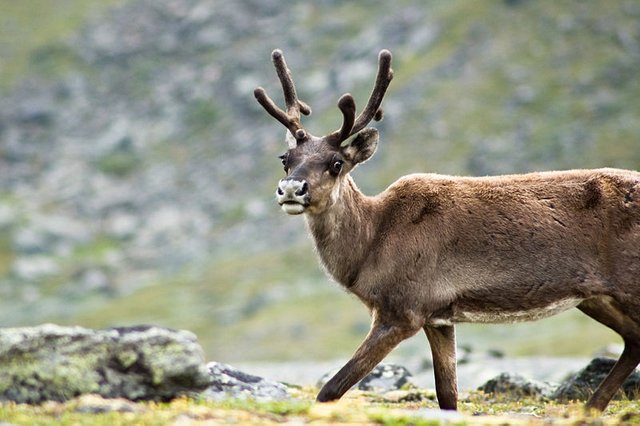
Wikimedia: The reindeer was a preferred hunt, author, Alexandre Buisse, licensed under CC BY-SA 3.0
Analysis suggested that they had tolerance for different habitats but mostly grasslands and conifer forests which saw the sight of medium and large herbivores animal, they even occurred in subpolar climates which was proven from the sightings of their footprints alongside those of the reindeer.
They were very active carnivores animal, which hunted medium and large herbivores. From the understanding of caves drawing which showed them together while hunting, it was suggested that they hunt in groups which is similar to its relative, bringing down small prey with their front paw, holding it together with the front feet and finally concluding the hunt with a bite with its sharp teeth right at the back of the neck or chest region.
For bigger animals, since they could not run as fast as their prey could, they might pounce on them from behind which follows a powerful strike with their paw throwing the prey off balance then conclude the hunt with a kill by bite.
Samples of bones found with their in caves showed indications that they had most of their meals to be reindeer and bear cubs. Some other prey will be the young woolly rhino, the giant deer, young mammoth, bison musk ox, the red deer to mention few, they had competition for prey with the Ice Age European Leopard.
Where We Would Have Found Them
The Panthera leo spelaea specie was noticed about 370,000 years ago in the Pleistocene epoch and they lasted to about 10,000 years ago which was the Würm glaciation but some indications led to the belief that they may have existed in the historic period which was about 2,000 years ago.
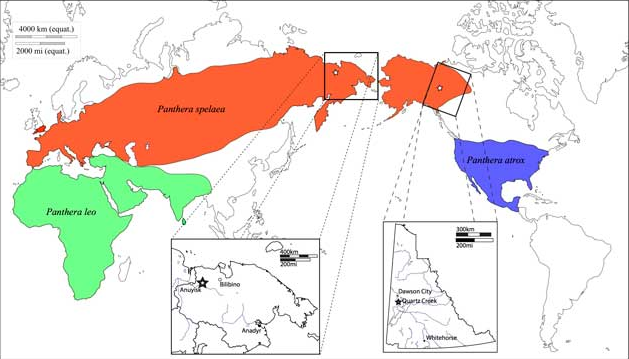
Wiki: Red indicate Panthera leo spelaea distributionLicenced underCC BY-SA 3.0, Authors: Ross Barnett, Marie Lisandra Zepeda Mendoza, André Elias Rodrigues Soares, Simon Y W Ho, Grant Zazula, Nobuyuki Yamaguchi, Beth Shapiro, Irina V Kirillova, Greger Larson, M Thomas P Gilbert
Their range during the Pleistocene covered Asia and Europe as they may have also existed in Germany, Britain, France down to Siberia and Turkistan, it's relative the Panthera atrox might have been existing around North America.
They were cited from Europe down to Alaska, their distribution also covered Southeast of Europe, iberian Peninsula, Central Europe, Great Britain, Northern Eurasia, the eastern European Plains, Canada and Alaska having its last fossil to be found at Alaska which was dated to be 11,925 years.
Other Discoveries And Deduction
In 2008, along the Maly Anyuy River in Russia a cave lion specimen was discovered still well preserved having some clumps of its hair, it was dug up from the earth. 2015 saw the Discovery of its cubs, frozen around the Uyandina River, suggestions say it might be dated to be around 25000—55000 years old.
Research into this fossil showed that the discovered cubs might have been just a week old before death, this was due to their milk teeth were not out fully out and this evidence related that they might have been hidden in caves up until they are matured to leave.
Also in 2017 around the Tirekhtyakh River, another cub was found which was a bit older than the ones found in 2015 saying thay may be about 1/2 to 2 months of age.
Without much ado, let's get to know why this animal is now referred to as an extinct.
The Road To Extinction
During the Pleistocene period, some species of large predators met their demise due to the lack of prey to hunt, but was this a factor?. Evidence say they survived this period in small populations of which the survival of the reindeer which was a preferred hunt was helpful.
An exact time of extinction is not known but suggestions were that their demise was due to an increase in competition between them and other good hunters such as the wolves and humans. The end of the Pleistocene period saw the replacement of Plains with forest which though kept the cave lion at home was a contribution to amazing hunt pattern by the wolves, as they were a bit restricted due to the Plains which existed before this period and now good hunters of same prey as the cave lions.
Ecological coexistence have shown that two predators can't exist hunting same prey in an ecosystem, one normally give in with time unless the number of prey hunted are quite numerous. Though the Panthera leo spelaea was known to be a more stronger hunter than the wolves, they needed more of the hunt to cater for themselves unlike the wolves which needed little due to their small body size.
Furthermore, they both hunt with different techniques, the Lions were understood to be ambush hunters conserving energy during hunting since they could not run as good as their prey in a speed test thanks to their body build, the wolves on the other hand were good runners which dissipate energy while running using the tactics of causing a herd of deer to flee to enable them pick out the slow once for meal, thus they are more at a greater advantage of getting the meal than the Panthera leo spelaea which they co-existed with.
Then came a more advanced hunter for same meal, the humans, using weapons and their intelligence in the hunt, they were more successful than either the cave lion or the wolves.
Art works of cave lions found in caves suggested that they came in contact with humans and this contact just like we know from experience with the modern lion isn't a friendly one as the lion might kill a human unarmed.
Research have not really explained the extent of conflict which existed between this cave lion and humans as a fossil discovery of human and lion together can have so many explanation but the cave arts show that they must have been held in high esteem by humans and might have been used for early rituals.
Another theory suggest that they might have been hunted to extinction by humans for their pelts this was due to a research by Dr. Marian Cueto, a researcher from Universisad de Cantabria of Spain where he tried to study nine toe bones of the cave lion gotten from LA Garma Cave. This analysis brought to light that the bones showed a sign of modification by humans using some tools as they tried to skin this lion keeping fur intact to claws.
The LA Garma Cave have also been known to be a place for rituals by humans and just like some other animals now extinct due to hunting, they might have been hunted to extinction for their symbolic figure.
These discovery on the Panthera leo spelaea subspecies was all thanks to the carvings made by the early humans as the bones only might not have told lots of the existence of this animal stating its features. Its sad to say that we will not get to see this animal ever again, neither can we get a chance to compare with its relative as they are termed extinct we just have to work together to see that the issue of extinction of animals in our time is brought to an end and this can begin with the African lion which is now walking the road to extinction.
Concerned Living Relative - The African Lion
Scientific name: Panthera leo
Status: Vulnerable to Extinction
The African lion is a living relative to the extinct Panthera leo spelaea (a smaller relative) which is worth conserving as they have been seen to be depleting in the wild as the day goes. This is known to be the second largest living cat in in our world with colouration ranging from yellow to dark brown and it's male having a thick mane of hair around its neck, their tail are quite long ending with a furry tuft and they have their range to be the eastern and southern parts of Africa.
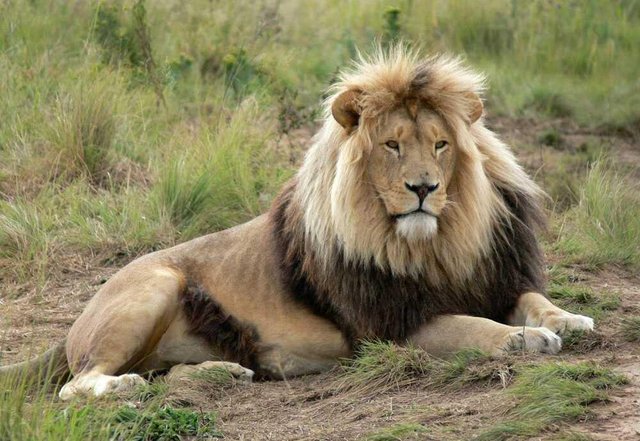
Flickr image by Induna Adventures: The King Of The African Forest,
In the wild, they move in groups called the Lions Pride which consist of 15 lions on the average with 2-3 males, 5-15 females and others young ones, the male defend their territory protecting the pride and the females engage in hunting mostly which sees them hunting large preys such as the wildebeest, the Zebra, the kudu to mention a few.
Over the years they have expirence a huge decrease in population making us wonder if they will join their extinct relative with time, a world without the Lions. It is now our duty to continue the sustenance of this animal in the wild hence I have put together some possible threats which might have caused this declination and conservation solutions to combat them.
Threats And Possible Conservation Strategy
To save the Lions we must first understand some cause of this declination in population. In this section I will be outlining some threats faced by the African lion which led it to its vulnerable spot outlining some possible solutions to them as such we might work together to see that the African lion thrive in our world for time to come.
Conflict With Humans
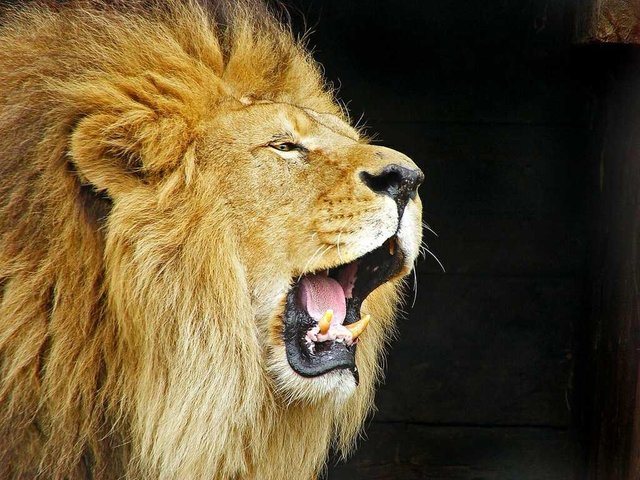
Flickr image by Tambako The Jaguar: Let's save the vulnerable lion
Overtime lions have been in conflict with humans, would you blame them?, they are of the wild. This conflict have seen the two parties fighting their way to survival with the Lions attacking livestock belonging to local farmers and in turn being vulnerable to ploys by these local farmers to eliminate any predator which come their way of!, this have seen many lions in the wild loose their numbers though a good record is not known.
Conservation:- The conflict between lions and man can not be brought to an end as we well know (you might try asking nature why) this is where we act as higher animals. The implementation of a proper measure for livestock management by farmers living in areas close to their habitat should be encouraged and a means of compensation set by the government for losses with respect to wild lions as it might go a long way to reduce this conflict amongst humans and lions thus protecting this animal.
Depletion Of Prey
Just like we saw from the extinction of the Panthera leo spelaea a suggested cause might be prey depletion which have also been seen to be a major cause of extinction of some animals overtime, now a study have shown the lion to be vulnerable to this as some factors such as commercial bushmeat tread have led to the reduction of prey in many parts of Africa. Statistics shows that Eastern Africa experience a herbivores population decrease of 52% and West Africa by 85%, these numbers affect the survival of the lion in these areas.
Conservation:- The cause of prey depletion is mainly by commercial tread of Bush animals leading to severe hunting and elimination of these animals which serve as prey to the lion, hence more focus on domestic livestock farming for meat production should be encouraged and for food in general more should be done with respect to cultivation of plants which can serve as a food source for our needs rather depending on meats of the wild.
The Use Of Lion Body Parts And Bones As Traditional Medicine Derivative.
This have led to a decrease in the population of Lion in Africa to a great extent as this have seen to an increase illegal treading for this animal. A survey done in Nigeria, showed that 22 body parts of Lion are considered as traditional medicine with 200 people interviewed say they have used in the past. In Asia there have been an increase in the demand for lion bones and China legalized the use of Lion bones in the making of medicinal wines which also contains tiger bones and this have seen South Africa exporting these bones in large quantities to them,leading to poaching of this animal when other alternatives can be sort for.
Conservation:- The legalization of Lion bone trade have over the years served as a shade for trade of Lion parts and illegal trade of the African lion hence this is a call on the government of these countries to propose and enforce laws to combact such illegal trade. Also the use of Lion parts as source for medicine should be prohibited so as to encourage other sources of the needed medicine which is not sourced for by the rich, since everyone wants it raw.
Trophy Hunting
Trophy hunting was meant to be a tool for conservation in some sub Sahara parts of Africa as it aims at providing financial resources for the government and locals to conserve wild life in some areas with rules on the animals to be hunted and weapons to be used but this have been been seen to take a downside effect on the African lion due to the lack of good management. The offtake of one male lion to 2,000 km² was suggested but this have been seen to not be heeded to, thus causing a threat to the Lions.
Conservation:- Trophy hunting can be a way to conserve wild life but can also have a negative effect on these animals when not managed rightly hence regulations should be enacted with the aim to see to the sustainability of African lions in the wild and trophy hunting in general managed rightly with respect to all animals of the wild.
Bringing It All Together
It's sad to know we missed such amazing creature and the fact we might not get to see them again except for pictures and arts and talking about them in articles like this, this just implies that any animal might be lost with time if steps are not taken to conserve them.
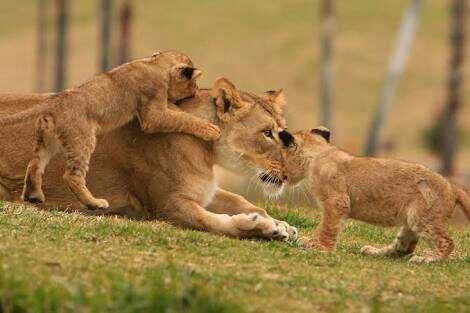
Flickr image by fortherock: Lion and cubs
A more painful theory was that which suggested that man might have a hand in the extinction of this specie, and it only left me in awe, wondering how cruel the actions of man can be towards some animals to the point of leading to extinction, more laws have to be promulgated, enforcement set to extreem so as to conserve the animals in the wild these animals as their survival now depends on us.
The African lions as we have seen focus today are having their numbers dropping with time, bringing them from the verge of extinction is a collective effort of all humans, and when the time comes, don't hesitate to act positively toward their conservation, gamers today have introduced this animals an example is the GTA San Andreas game. And with that, I will end it for today.
PS: Want to know about some cool animals which you might not get to see in a lifetime due to them being extinct, join me as we dig up bones and pay visits to caves every week on EXTINCTION, hope the bones weren't all scary 😖
Source Articles
Panthera leo spelaea and Humans
This article was brought to you in conjunction with our partner Mechanic Assistant
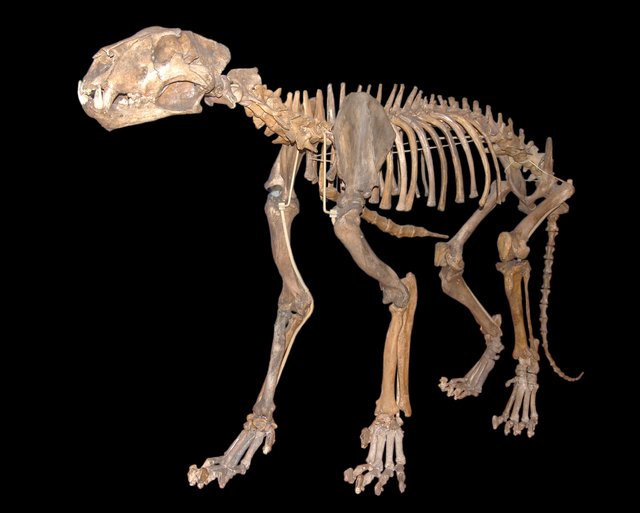
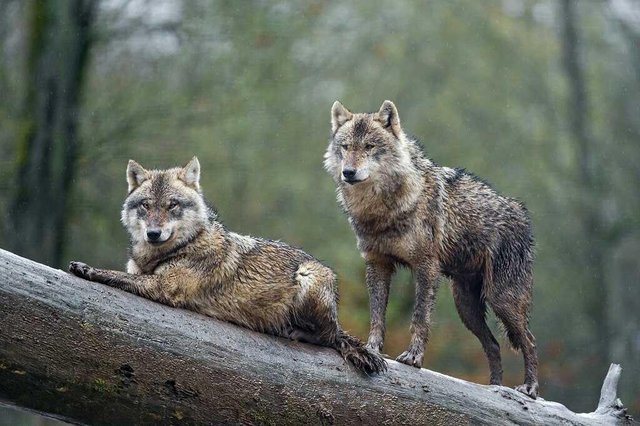
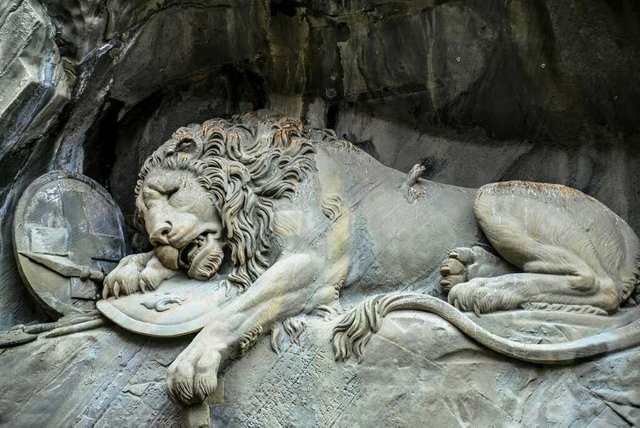
I really loved the history lesson from the post. I loved the lions since I was a kid (I also grew to love them because of The Lion King), but I never explored much of their predecessors!
They are amazing creatures, do you know the Panthera atrox is said to be 30% bigger than what we see now, that's a huge lion there. Thanks for reading, Am glad you loved it :)
Yes you mentioned they were bigger, but 30% added to a large animal like a lion is really huge!
I would have loved to face one of such size, magnificent, that's If they won't get all roaring on me :), every animal is worth the save and I just hope we do better with regards the African Lion which is currently on a decline in population.
Lol. "First issue of extinction".. Now, that really got me laughing.
P.S: It is almost possible to see those extinct animals again. Ever heard of Resurrection Biotechnology (De-extinction tech)?. It could work though.
Nice piece
The first issue line just came up when I remembered the best article to visit on steemstem :), the article of articles.
Heard a bit about the possible de-extinction of some species but haven't done any research on then, will probably include that in another issue on this :). Its nice of you stopping by @samminator The Terminator (if you don't mind me calling you that :) ), glad you find the pice interesting.
Lol. Feel free.. Some people also call me that :p
Wow! This is really nice and long as well. Whenever I hear or read about extinction, I'm always forced to ask if humans can go into extinction later..
Well, I'm not really an animal person, I don't even visit the zoo, and I didn't even know there were larger panthera species. I thought it was just the Panthera leo there was. Well, anyway, it's good I know now. Thanks to you.
Well, I did see a part that depicted competition - where the wolves outsmarted the Panthera Leo spelaea in terms of predating, then humans came into the picture and outsmarted the wolves with intelligence and technology.
Nice writing anyway! Will keep looking out for you.
The extinction of humans, quite thoughtful :) , with the rapid rising population, chances of that is quite low else we are to face an unsolvable pandemic, I think, its still worth the thought.
Am glad you found the piece interesting @pearlumie, nice stopping by :).
This makes me so sad, that we humans somewhat contributed to the extinction of these animals. Im hoping that we can work on preserving our wildlife by taking care of the environment even more.

Some species of animals have gone extinct solely by human actions, hunting for fun, for food and so many reasons I just get stunned, without putting into consideration that this affect the population of these animals.
Its a good thing we now took to notice some of these animals and organizations like the UICN and many just like it now work together with the government to fight against extinction of any specie, but more still need to be done on this regard if you ask me. Thanks for reading @sakura1012, nice of you stopping by.
Congratulations @logic42! You have completed some achievement on Steemit and have been rewarded with new badge(s) :
Click on any badge to view your own Board of Honor on SteemitBoard.
To support your work, I also upvoted your post!
For more information about SteemitBoard, click here
If you no longer want to receive notifications, reply to this comment with the word
STOPCongratulations @logic42! You have completed some achievement on Steemit and have been rewarded with new badge(s) :
Click on any badge to view your own Board of Honor on SteemitBoard.
For more information about SteemitBoard, click here
If you no longer want to receive notifications, reply to this comment with the word
STOP